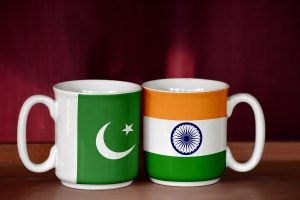Often named as the single largest Assam orthodox tea manufacturer in India, Parimal Shah joined his family tea business at the age of 19. He has worked as a tea specialist and taster with an internationally renowned tea broking company. Today he is the vice president of MK Jokai Agri plantations Pvt Ltd. Excerpts:
Q. Kindly elaborate on the concept of orthodox tea.
Advertisement
Orthodox Tea comes from the same tea plant species (known as Camellia Sinensis) from which is available all other types of teas. The five primary types of teas which are popular worldwide are black tea, green tea, white tea, pu’er tea and oolong tea.
Orthodox tea is a sub-variant of black, green and white tea. The leaves of orthodox tea are drunk straight (black, green or white), without boiling it with milk. Normally consumers prefer to add a dash of honey or lemon while drinking orthodox tea.
It is the production process which differentiates one tea type from another. For example, in India, we normally consume CTC (crush tear curl) variant of black tea. It is a granulated form of tea which is purchased by consumers across India and the way we enjoy it is by boiling the leaves with milk, and adding spices and herbs such as cardamom or ginger along with some sugar (traditional Indian chai).
Orthodox tea on the other hand is best enjoyed as straight black, green or white tea, without adding milk or sugar. There is a possibility to brew a cup of orthodox tea with certain herbs. However a good orthodox tea by itself is quite flavourful and most additives available in the Indian kitchen would rather compete in flavour with the tea instead of augmenting its flavour.
Almost all Western as well as middle eastern and gulf countries consume orthodox tea. In terms of global production, Sri Lanka is the largest producer and exporter of black orthodox tea, followed by Assam in India.
Q. How is the demand for Assam tea globally?
Assam Tea is considered by many countries as the gold standard for tea. Infact, it is the single largest grower of tea in India and account for over 55 per cent of all teas produced across our country.
Tea from Assam also form the base for blends largely consumed within the European Union, the UK, Russia, CIS and the USA. In the recent past, the global demand for good Assam teas has gone up substantially because of a shift of western consumers from coffee to tea. On account of its mellow cup and smooth character, a cup of Assam (Orthodox or CTC) goes very well with all meals, breakfast, lunch and dinner!
Q. In the era of hybridisation,how challenging is it to stick to traditional methods of tea production?
Tea farming and production is a combination of science and art. A factory can make good tea only if the raw materials (the tea leaves) are good. If the raw material is not up to the mark, no matter how upgraded or technologically advanced a factory maybe, it can’t create good tea. In other words, it all boils down to good farming practices and discipline.
Till today, the amount of mechanism or automation in the Tea industry, especially at the farm level is at a very nascent stage. This is because there is a fair bit of manual judgement and human experience that is required by tea-pickers while she plucks leaves from the bushes or by a farmer when he creates a tea nursery or administers fertilisers.
Such practices cannot be easily automated as they require highly skilled and specialised workforce. Still, there are certain areas where mechanisation at the field level is possible.
However, the more you mechanise a process, the more standardised it gets. While this is good for a factory, it can be disastrous for a farm because of multifarious factors, such as the constantly changing weather, the fast eroding top soil structure etc.
At the factory level, yes, a lot of tea companies have been able to successfully employ automated processes such as conveyor lines where right from the withering trough till the sorting room, the entire process is automated. Hybridisation or mechanisation at a factory level is in fact desirable because one requires a standardised system of processing inside a factory.
Q. What were your dreams when you joined the family business at the age of 19? Looking back now, are you living those dreams or are you yet to achieve them?
The nature of dreams and ambition is such that they are never ending! Indeed I am blessed to have been personally mentored by my father and grandfather. When I first joined our family’s tea business, I really wasn’t sure about how good I would be at understanding this business, but over the years, I have developed a great fondness for this beverage.
Really there are so many things that you can do to value-add tea. I currently specialise in product development, blend development, branding, value adding and marketing teas for our business and I have realised one thing over the years, really you can never get enough out of tea. Every day, there is a new idea which can be created using tea!
Q. What do you have to say on the growing unemployment problems of tea pickers in India?
The tea industry is in fact one of the largest employers of our nation. One of the main reasons for growing unemployment of tea pluckers is the advent of bought leaf factories. These are basically stand-alone factories that do not indulge in growing or farming tea.
They simply buy tea leaves from small farmers at very low rates and use their factory to convert the green leaf into made tea. Since the quality they produce is of very average quality, these factories largely focus on quantity.
The importance of good farming practices is reducing at an alarming rate which is forcing small farmers to resort to cost reduction to meet the unreasonably low costs for green leaf offered by bought leaf factories.
With this the importance of tea leaf pluckers is reducing and since the smaller tea farms are unable to compete with the costings of bought leaf factories, many of these small tea growers are forced to shut down. If a level playing field is somehow provided by the government where the price of green leaf is increased so that the farmers can survive the situation could easily reverse.
Q. Give our readers a glimpse into the world of tea testing and manufacturing.
The process of tea manufacture is very interesting. The stages include plucking, withering, rolling or crushing, fermentation, drying, sorting and packing.
It all starts with the tea leaves being plucked from the tea bush. The excess moisture is removed from the plucked leaves by putting them in large withering troughs. The factory manager here decides the percentage by which the moisture from the tea leaves must be reduced. There are several factors that come into play here, such as the weather, rainfall, terrain, time of the year, whether the factory is planning to make CTC or Orthodox teas.
If the factory is planning to make Orthodox tea than the withered tea leaves are put inside rolling table, where these are rolled and opened up. To make CTC teas, these are crushed by a Rotorvane machine.
The rolled or crushed leaf is then fermented. These are then allowed to react with oxygen. The fermentation process is very crucial as it gives a distinct character and taste to the tea. An experienced factory manager knows exactly how much time should he / she allow the tea to ferment, and under what atmospheric conditions.
Finally the fermented leaves are dried in large industrial dryers where these are subjected to high temperatures. The fuel used here is either coal or natural gas. The drying process is what gives the black colour to the tea and also increases the shelf life of the fermented tea.
The dried teas are then sorted into different grades. The grading system for Indian tea is quite diverse, especially in orthodox ones. The sorted teas are then packed and made ready for dispatch.
Modern factories nowadays employ high degree of automation to complete the processes.
Q. What strategies do you follow to keep up with the Indian as well as the global market?
I represent the marketing and value-added segment of our organisation and operate under my father, who is our group chairman. The Tea business, especially the sales side, is really all about creating and maintaining relations. It takes decades to mature. The global tea market has matured over the years and with technology it has become extremely transparent.
Q. Where do you see yourself 10 years from now?
Our core competitiveness is in manufacturing high quality orthodox teas, export and branding. We do that well. We are working on several new projects currently with the aim of creating more value for our customers and employees.











